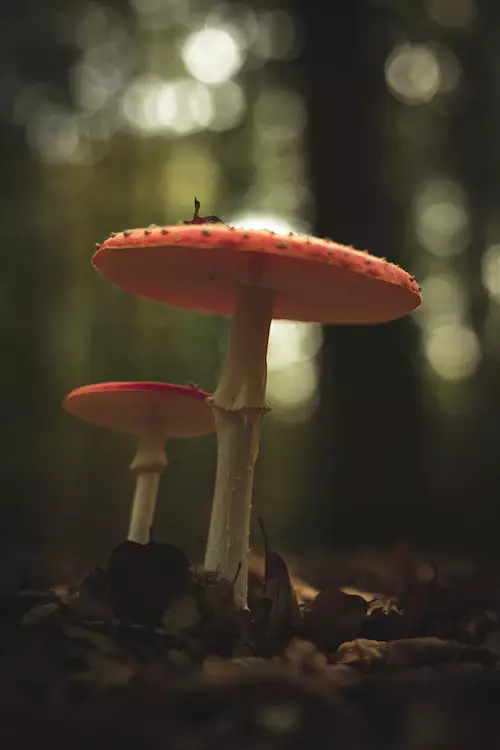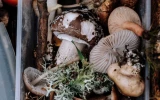Oyster Mushroom Pins Drying Out: What To Do?
One of the most important steps in preserving your mushrooms is drying them out, but what happens if they start to dry out too quickly and you're left with pins instead of full mushrooms? This article will provide insight into what to do when your oyster mushroom pins are drying out.
If your oyster mushroom pins are drying out, try increasing the humidity levels by using a humidifier, misting them with water, or covering the area with a plastic sheet. Reducing airflow and protecting the fruiting body will also help to retain moisture. Remove dead pins and monitor the temperature in the area afterwards.
It is critical to intervene quickly when oyster mushroom pins begin to dry up. Let's discover the proper storage techniques to keep your mushrooms safe and healthy for future use.
Summary
- When oyster mushroom pins start to dry out, it is essential to take prompt action to prevent further dehydration and maintain optimal growing conditions.
- Increasing humidity, reducing airflow, and watering are essential steps to take when oyster mushroom pins are drying out.
- Fruiting body protection, removing any dead or unhealthy pins, and monitoring the temperature are techniques that you can use when oyster mushroom pins are drying out.

Increase Humidity Levels When Your Oyster Mushroom Pins Are Drying Out
Here is a list of things you should do when your oyster mushroom pins are drying out:
1. The first step is to increase the humidity levels in the growing environment
You can achieve this by misting the area with water, placing a humidifier near the growing area, or covering the area with a plastic sheet or dome to retain moisture.
Misting the area with water
- Start by cleaning a spray bottle with soap and water, rinsing it well, and filling it with clean water. You can use distilled or filtered water to avoid introducing any contaminants into the growing environment.
- Adjust the nozzle of the spray bottle to produce a fine mist that will cover the mushroom pins without causing damage or disturbing the growing substrate.
- Hold the spray bottle at a distance of 15-20 cm (6-8 inches) from the mushroom pins and spray a fine mist of water over the pins. Spray until the pins are visibly damp but not soaking wet.
- Depending on the environmental conditions, you may need to mist the area several times a day to maintain adequate humidity levels. However, be careful not to over-mist, as excess water can lead to waterlogging, bacterial or fungal growth, and other issues.
Placing a humidifier near the growing area
- Choose a humidifier that can produce enough humidity for the growing environment. A humidifier with a built-in humidistat or hygrometer can help you monitor and adjust the humidity levels.
- Position the humidifier near the growing area, ensuring that it is not too close to the mushroom pins or the substrate. A distance of 2–3 feet from the growing area is ideal.
- Fill the humidifier with clean water, following the manufacturer's instructions. You can use distilled or filtered water to avoid introducing any contaminants into the growing environment.
- Turn on the humidifier and adjust the humidity output to the desired level. For oyster mushrooms, a humidity level of 85–95% is optimal.
- Monitor the humidity levels using a hygrometer or a built-in humidistat. Adjust the output of the humidifier as needed to maintain the desired humidity level.
- Refill the humidifier with water as needed, following the manufacturer's instructions. Ensure that the humidifier is cleaned regularly to avoid the buildup of bacteria or other contaminants.
Covering the area with a plastic sheet or dome
- Start by cleaning a plastic sheet or dome with soap and water, rinsing it well, and drying it thoroughly. You can also use a commercially available plastic dome designed for mushroom cultivation.
- Position the plastic sheet or dome over the growing area, ensuring that it covers the mushroom pins and the substrate. You can use weights or clips to secure the edges of the sheet or dome to the growing container.
- Create one or more small air vents on the plastic sheet or dome to allow some fresh air exchange. You can use a knife or scissors to cut small slits or holes in the plastic.
- Remove the plastic sheet or dome once the mushroom pins have fully developed and are no longer at risk of drying out. Be careful not to damage the delicate mushroom pins when removing the plastic.

2. Reduce airflow in the mushroom’s environment
High airflow can cause rapid moisture loss from the mushroom pins.
- You can reduce airflow by closing any vents or windows near the growing area and reducing fan speed.
- Identify sources of airflow, close windows or vents, block drafts, monitor humidity levels, and check for signs of mold or contamination regularly.
- You can use window seals or weatherstripping to prevent air from leaking in through cracks or gaps.
- Block any drafts by placing draft stoppers or towels under doors or around windows. This can help to create a more stable and consistent environment for the mushroom pins.
- Reduce the fan speed to the lowest setting possible. If the fan does not have speed control, consider unplugging it temporarily.
- If reducing fan speed is not possible or practical, consider alternative cooling methods that do not affect the growing environment as much. For example, you can use a portable air conditioner or evaporative cooler that does not require high airflow.
3. Fruiting body protection for the mushroom pins
Protecting the fruit bodies of the drying mushroom pins is important to prevent physical damage or contamination, which can hinder their growth or cause them to become infected with harmful pathogens. Here are the steps to follow to protect the fruit bodies:
- Be gentle when handling the mushroom pins to avoid damaging them. Use clean, sanitized gloves when touching them to prevent contamination.
- Avoid overcrowding the growing area, as this can cause the fruit bodies to rub against each other and become damaged. Ensure that there is enough space between the pins to allow them to grow without interference.
- Place a mesh or netting over the mushroom pins to protect them from falling debris, pests, or other potential sources of contamination. Ensure that the mesh or netting does not restrict airflow or light.
4. Remove any dead or unhealthy pins to promote their growth
Removing any drying or dead mushroom pins can help redirect the energy of the mycelium to other fruiting bodies and promote their growth. Here are the steps to follow to remove the drying or dead mushroom pins:
- Regularly check the growing area for any mushroom pins that are drying out or have stopped growing. These will be brown or discolored and may feel dry to the touch.
- Use a clean and sharp pair of scissors or a scalpel to cut the drying or dead mushroom pins at the base. Be careful not to damage the surrounding pins or the mycelium.
- Collect the cut pins in a container or plastic bag and dispose of them properly. Do not leave them in the growing area, as they can attract pests or harbor harmful pathogens.

5. Monitor the temperature of the mushroom pins' environment
Ensure that the growing environment is not too hot, as high temperatures can also contribute to dehydration. Oyster mushrooms thrive at temperatures between 20 and 27°C (68 and 81°F).
- Use a digital thermometer to measure the temperature in the growing area.
- Choose a thermometer with a probe that can be inserted into the substrate or placed near the mushroom pins for accurate readings.
- Fluctuations in temperature can be harmful to the mushroom pins and can cause them to dry out. Monitor the temperature closely and take action to stabilize it if it fluctuates too much.



